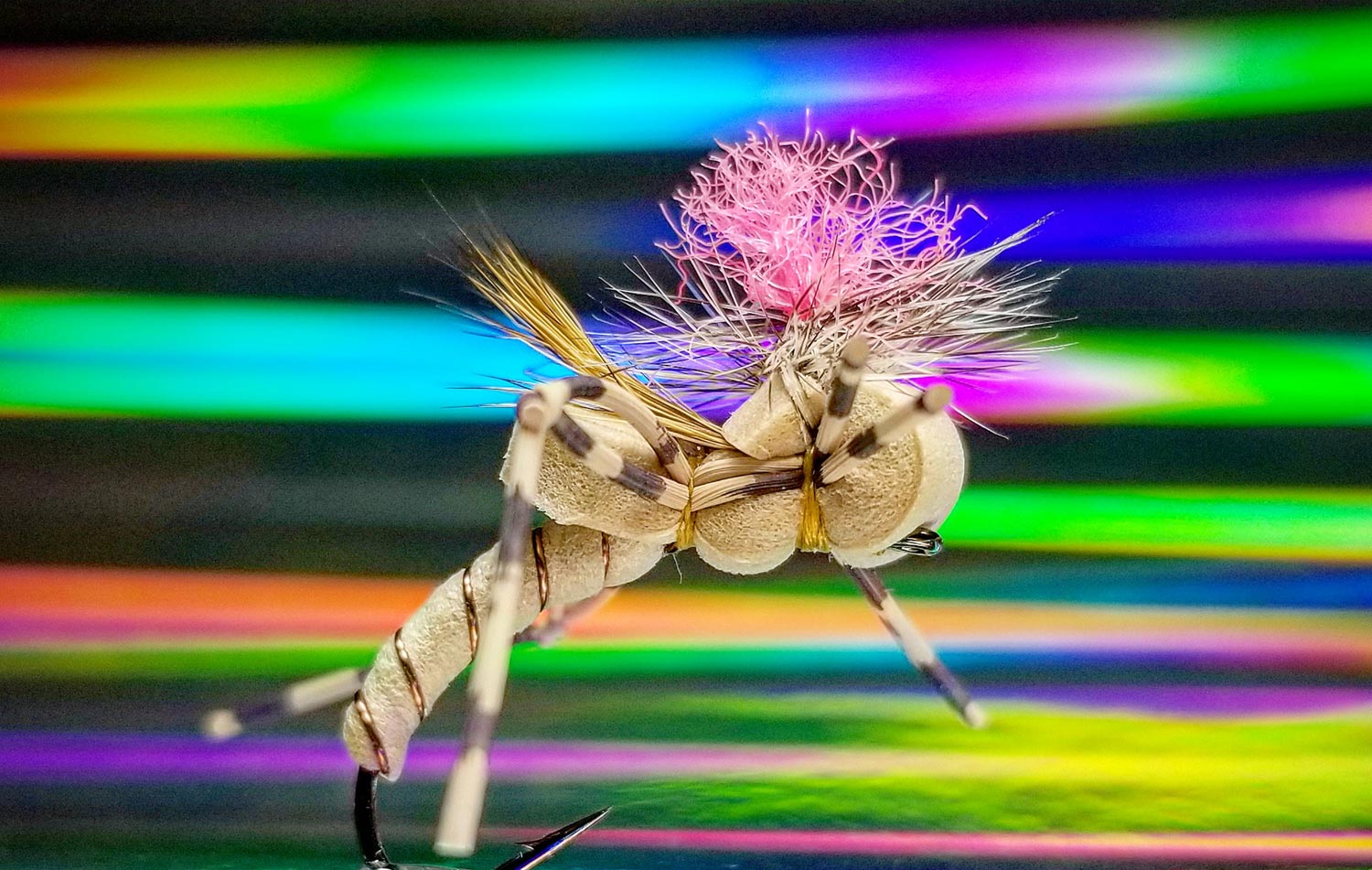By Bob Reece
The world of fly patterns is well saturated with hopper patterns.
It’s rare to see something in this genre that separates itself from the masses. Colby Crossland’s Klink Hopper does just that.
Colby is a guide for the Spinner Fall guide service on Utah’s beloved Green River. He spends a large percentage of his year behind the oars, facilitating fly fishing with his clients. Terrestrial patterns are a key element in his arsenal during the summer and early fall months. Over the past year he set out to create a highly buoyant hopper with aesthetics that diverged from the norm. The result of this venture was the Klink Hopper.
The Klink Hopper’s buoyancy is second only to an indicator. In addition to this, its profile does a wonderful job of imitating a struggling hopper. It also conveys vulnerability. After all, not all hoppers float along until they are slashed from the surface by hungry trout. Many of these tasty terrestrials drown and descend to the stream bottom.
Stuck in the shuck emergers have changed the dry fly game. In the same way this pattern has the potential to change our terrestrial tactics. This transitional link between the surface and the depths will be available as an addition to your terrestrial box through Rainy’s in 2018.
Watch the video and learn to tie The Klink Hopper!
To book your float trip with Colby on Utah’s stunning Green River, click on the link below:
http://www.spinnerfall.com/Home
Bob Reece Gink & Gasoline www.ginkandgasoline.com hookups@ginkandgasoline.com Sign Up For Our Weekly Newsletter!
Sign Up For Our Weekly Newsletter!


An addition for your hopper: Years ago, just for giggles, I started putting three inch, gold-fleck, soft rubber legs on my hoppers rather than the usual stiff barred rubber variety. The legs come from a bass lure skirt. These long legs hang below the fly and wiggle around in the current. Fishing my usual runs, the fish do seem to happily notice the additional leg movement.
Thanks for the tip Fred.